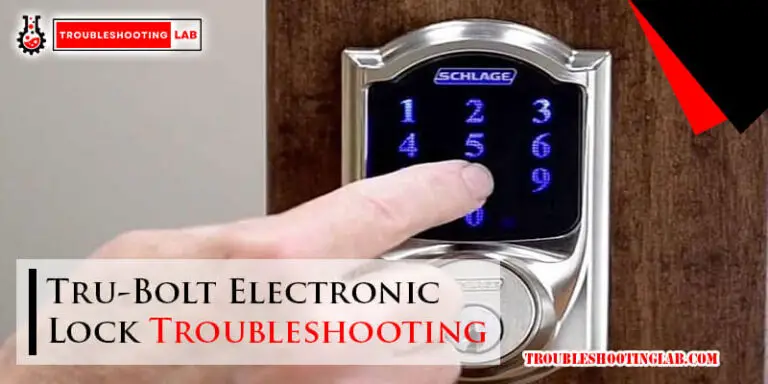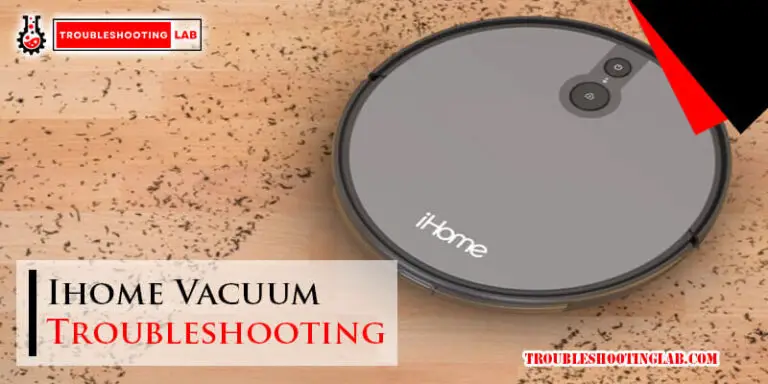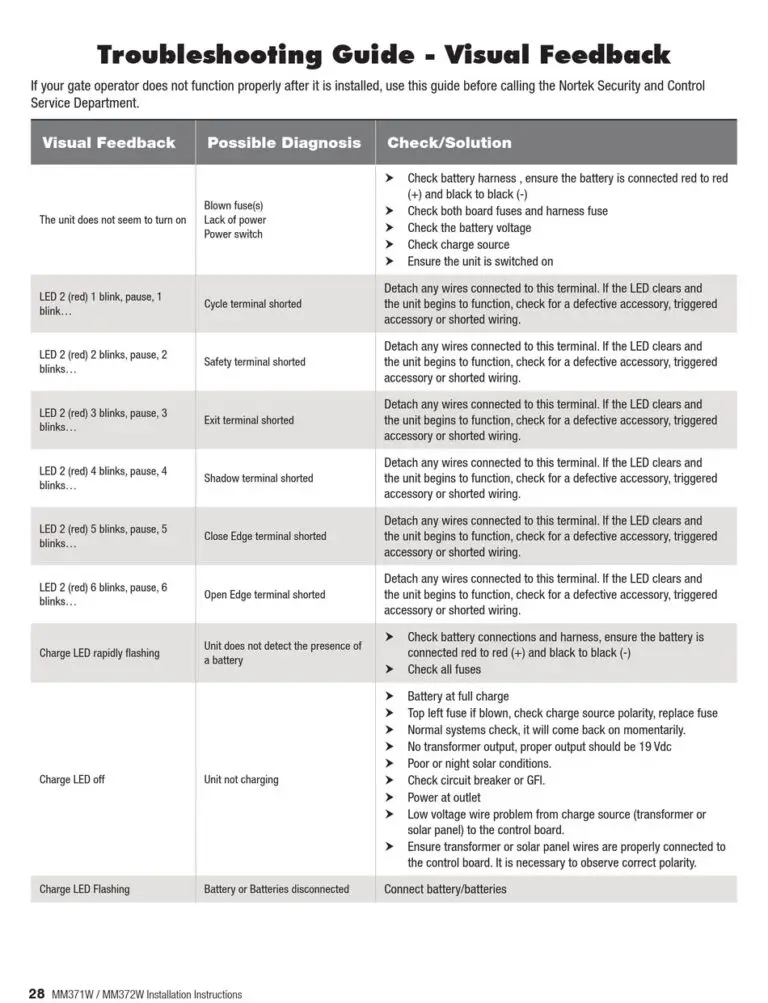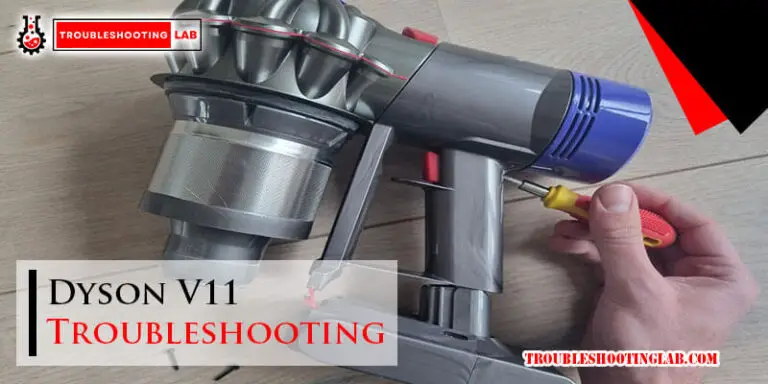American Farmworks Solar Fence Charger Troubleshooting
Is your American Farmworks solar fence charger giving you trouble? Don’t worry—you’re not alone.
When your fence charger isn’t working as it should, it can leave you feeling frustrated and concerned about the security of your property or livestock. But here’s the good news: most issues with these chargers can be fixed quickly and easily with the right guidance.
In this post, you’ll discover simple troubleshooting steps that can save you time, money, and stress. Whether your charger isn’t powering up, your fence isn’t delivering a proper shock, or you’re dealing with inconsistent performance, we’ll help you pinpoint the problem and get your system back on track. Stick with us, and by the end of this article, you’ll feel confident in solving these issues yourself—without the hassle of calling in a professional. Ready to take control? Let’s dive in!
Common Issues With Solar Fence Chargers
Solar fence chargers are essential for maintaining secure boundaries. Yet, they can face common issues that disrupt their functionality. Understanding these problems ensures your fence charger works efficiently. Below are common issues with solar fence chargers and how to address them.
Fence Not Delivering Power
This issue often occurs due to poor connections or broken wires. Inspect the fence line for breaks, rust, or loose connections. Ensure the charger is properly grounded. A poor ground system can block power flow to the fence. Remove vegetation touching the wires, as plants can drain energy.
Charger Not Turning On
A non-functioning charger can result from dead or faulty batteries. Check the battery’s charge level using a multimeter. Clean the solar panel to ensure it absorbs sunlight effectively. Dirt or debris on the panel can prevent the battery from charging. Inspect the on/off switch and internal wiring for damage.
Low Voltage Output
Low voltage may happen due to insufficient sunlight or an old battery. Place the charger in a location that gets full sunlight. Replace the battery if it no longer holds a charge. Inspect the fence line for shorts, such as wires touching the ground. Short circuits can reduce voltage output significantly.
Inspecting The Solar Panel
If your American Farmworks solar fence charger isn’t performing as it should, the solar panel is a good place to start troubleshooting. The solar panel is the heart of your charger, converting sunlight into energy to keep your fence operational. By carefully inspecting the panel, you can often resolve issues quickly and avoid costly replacements or repairs.
Cleaning The Panel Surface
Dirt, dust, and debris can easily build up on the solar panel, blocking sunlight and reducing its efficiency. Grab a soft cloth or sponge and gently wipe the surface to remove any grime. Avoid using harsh chemicals or abrasive materials—they can scratch the panel and cause permanent damage.
Checking For Physical Damage
Take a close look at the panel for cracks, chips, or any signs of wear. Even minor damage can reduce its ability to gather sunlight effectively. If you spot issues like broken glass or loose wiring, it might be time to contact the manufacturer or a repair professional.
Sometimes, damage happens during storms or accidental impacts. Did you know that even falling branches can dent the panel? Consider placing the charger in a spot with fewer hazards to prevent future issues.
Ensuring Proper Sunlight Exposure
The solar panel needs full sunlight to function at its best. Check if it’s positioned in an area that receives direct sunlight for most of the day. Shadows from trees, buildings, or fences can drastically reduce its output.
Is your charger tilted correctly? A slight angle towards the sun ensures maximum energy absorption. On cloudy days or during winter, you might notice reduced performance—this is normal. Adjusting the angle seasonally can help maximize efficiency.
Inspecting the solar panel doesn’t have to be complicated. A clean surface, undamaged panel, and optimal sunlight exposure are key to keeping your fence charger running smoothly. Have you tried these steps? You might be surprised how much of a difference they make!
Testing The Battery
Testing the battery is essential for diagnosing issues with the American Farmworks solar fence charger. Use a multimeter to check voltage levels and confirm proper functionality. A low reading often signals the need for replacement or recharging.
When your American Farmworks solar fence charger isn’t working as expected, testing the battery is a critical first step. A well-functioning battery is the heart of your solar fence charger. Without it, your fence won’t deliver the power needed to keep your livestock safe or unwanted animals out. Let’s dive into the details of how to check the battery and what to do if it’s not holding up.
Signs Of A Drained Battery
How do you know if your solar fence charger battery is drained? The signs are often straightforward. – The fence voltage drops significantly or disappears altogether. – The indicator light on the charger may blink weakly or not at all. – Livestock or pests start crossing the fence, indicating a lack of current. A quick way to confirm this is by using a voltmeter. Disconnect the battery and test its voltage. If the reading is below the recommended voltage (typically around 6V or 12V, depending on your model), your battery is likely drained. Neglecting a weak battery can cause more damage to your charger over time. So, act fast to address the problem.
Replacing An Old Or Faulty Battery
If your battery consistently fails to hold a charge, it might be time to replace it. But how do you ensure you’re doing it correctly? Start by identifying the battery type your charger uses. This information is usually in the user manual or on the battery itself. Common options include sealed lead-acid (SLA) or rechargeable lithium batteries. When purchasing a replacement, pick one with the same voltage and capacity as the original. A mismatched battery can damage your solar charger. Swapping the battery is simple: 1. Turn off the charger to avoid shocks. 2. Disconnect the old battery carefully. 3. Install the new battery, ensuring the terminals are connected correctly (positive to positive, negative to negative). Once replaced, let the solar panel charge the new battery for a full day before testing your fence line. Have you checked your battery recently? A quick test can save you hours of troubleshooting and ensure your fence stays reliable.

Examining The Grounding System
Having trouble with your American Farmworks solar fence charger? The grounding system might be the culprit. A weak or faulty ground can lead to inconsistent fence performance or even total failure. Let’s take a closer look at two key aspects of grounding: your ground rods and soil conductivity.
Inspecting Ground Rods
Your ground rods are the foundation of your fence charger’s efficiency. Start by checking how many rods you’ve installed. Most solar fence chargers require at least three ground rods for optimal performance.
Are the rods deep enough? They should be driven at least 6-8 feet into the soil. If they’re too shallow, they won’t carry electricity effectively, especially in dry conditions.
Look at the connections too. Rust, corrosion, or loose clamps can disrupt the flow of electricity. Clean off any rust with sandpaper, and tighten the clamps securely. A solid connection makes a world of difference.
Improving Soil Conductivity
Dry or sandy soil can weaken your grounding system. Moist soil conducts electricity better, so you might need to water the area around your ground rods. A simple garden hose can work wonders here.
If you live in an arid region, adding salt around the ground rods can further enhance conductivity. Mix a handful of salt into the soil and water it thoroughly. Be careful not to overdo it—you don’t want to harm your plants or soil over time.
Have you considered the spacing of your ground rods? Place them at least 10 feet apart to avoid interference. This ensures the electric current flows efficiently back to the charger.
When was the last time you tested your grounding system? Use a voltmeter to measure the voltage between the ground rods and the fence line. A reading above 200 volts indicates a grounding issue that needs immediate attention.
By focusing on these small but impactful steps, you can boost your fence charger’s performance and keep your livestock safe. What’s the condition of your grounding system today?
Checking Fence Line Integrity
Maintaining the integrity of your fence line is crucial for ensuring your American Farmworks solar fence charger works effectively. If your fence isn’t functioning as expected, the problem often lies in the fence line itself. Checking for breaks, shorts, or vegetation interference can save you time and frustration.
Identifying Breaks Or Shorts
Breaks or shorts in your fence line can disrupt the flow of electricity. Walk along the fence and inspect each section carefully. Look for visible gaps, snapped wires, or areas where the fencing isn’t properly connected.
Pay close attention to areas near gates or corners where wires may loosen over time. If you notice sparks or hear a buzzing sound, it’s a sign of a short. Use a fence tester to pinpoint the exact location of the problem.
Once you find the issue, repair it immediately. Replace broken wires or tighten loose connections to restore the circuit. A sturdy, uninterrupted fence line keeps your charger working efficiently.
Removing Vegetation Interference
Vegetation can be a sneaky troublemaker for your fence charger. Overgrown grass, weeds, or branches touching the fence can drain power and reduce effectiveness. Walk along your fence and check for plants brushing against the wires.
Cut back tall grass and trim branches that could interfere with the current. Even small plants can cause resistance, so don’t overlook them. A clear fence line ensures electricity flows freely.
Think about how often you maintain your fence area. Set a regular schedule to check for vegetation growth, especially during rainy seasons when plants grow faster. A little upkeep now can save you from bigger issues later.
What’s the state of your fence line today? Take a walk and see if these steps can improve your solar fence charger’s performance.
Resetting The Charger Unit
Resetting your American Farmworks Solar Fence Charger can feel intimidating, especially if you’re new to using solar-powered systems. But the good news? It’s often a straightforward process that can get your fence charger back to working order in no time. Whether your unit isn’t charging or the voltage seems off, a reset is a logical first step before diving into more complex troubleshooting.
Steps For A Manual Reset
A manual reset is one of the easiest ways to fix minor issues with your solar fence charger. Here’s how you can do it:
- Turn off the unit:Switch off the charger and disconnect it from your fence and ground system. This ensures safety and prevents electrical surges during the reset process.
- Inspect the unit:Take a moment to examine the charger for visible damage, dirt, or debris. Clean the solar panel if it’s dusty, as dirt can block sunlight and hinder performance.
- Disconnect the battery:Open the charger case (if safe to do so) and unplug the internal battery. Let it sit disconnected for about 10-15 minutes. This step acts as a “hard reset” for the unit.
- Reconnect and restart:Reconnect the battery securely, close the case, and power the unit back on. Reattach it to your fence and ground system, then check the voltage output using a fence tester.
Did the reset solve the issue? If the charger is functioning normally again, you’re good to go. If not, don’t worry—there are still options to explore.
When To Contact Customer Support
Sometimes, even after a manual reset, your fence charger might still act up. This could be due to internal component failures or other technical issues beyond your control. If that happens, it’s time to call in the experts.
Reach out to American Farmworks customer support if:
- The unit doesn’t turn on after resetting.
- Voltage remains low despite a clean solar panel and good sunlight exposure.
- You hear unusual noises or see visible damage inside the unit.
Before contacting support, make sure you have your product details ready. Note the model number, purchase date, and a clear description of the issue. This will help the customer service team assist you more efficiently.
Don’t hesitate to ask questions when you call. For example, inquire about warranty coverage or whether they offer repair services. Fixing the issue might be easier than you think with the right guidance.
Troubleshooting doesn’t have to be overwhelming. A simple reset can often save you time and stress, and when in doubt, professional help is just a phone call away.
Tips For Preventative Maintenance
Keeping your American Farmworks solar fence charger in top-notch condition doesn’t have to be complicated. Simple preventative maintenance can save you time, money, and frustration. Let’s look at two key practices you can start applying today.
Regular Cleaning And Inspections
Dust, dirt, and debris can block your charger’s solar panels, reducing efficiency. Wipe the panels gently with a soft cloth every month to ensure they absorb sunlight effectively. A clean charger means fewer surprises when it comes to performance.
Inspect your charger regularly for signs of wear and tear. Look for loose wires, damaged connectors, or cracks in the casing. If you spot any issues, address them immediately before they escalate. This proactive step can prevent sudden breakdowns.
Don’t forget to check the battery health. A weak or corroded battery can disrupt the power supply. If you notice corrosion, clean the battery terminals using baking soda and water to restore their functionality.
Storing The Charger During Off-seasons
If you don’t use your solar fence charger year-round, proper storage is crucial. Leaving it exposed to extreme weather during downtime can cause irreversible damage. Store it indoors in a dry, cool place to protect it from the elements.
Before storing, ensure the charger is fully charged. A depleted battery can lose its ability to hold a charge over time. Keeping it charged helps prolong the battery’s life.
Disconnect all wires and accessories before storage. Tangled or damaged wires can create headaches when it’s time to set up again. Taking a few minutes to organize your equipment now saves you trouble later.
What steps will you take today to extend the life of your solar fence charger? Preventative maintenance is all about staying ahead of potential issues. Start small, stay consistent, and enjoy peace of mind knowing your equipment is ready when you need it.


Conclusion
Troubleshooting your American Farmworks solar fence charger doesn’t have to feel overwhelming. Start by checking the basics like connections and battery health. Inspect the solar panel for dirt or damage. Ensure the charger is positioned to get enough sunlight. Small adjustments can often resolve common issues.
Regular maintenance helps avoid problems in the future. If problems persist, consult the user manual or contact customer support. Keeping your fence charger in good condition ensures your fence stays effective. A well-functioning charger protects your property and livestock consistently.
Stay proactive and address issues early for long-term reliability.






